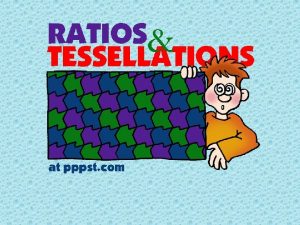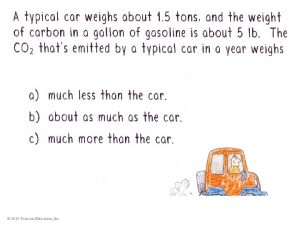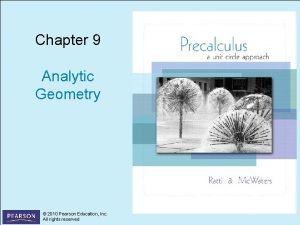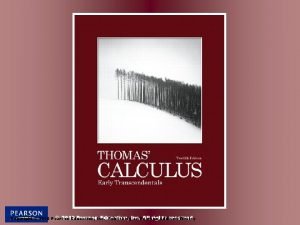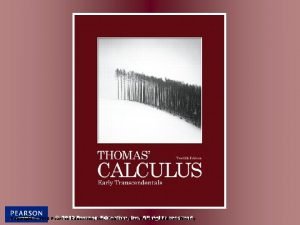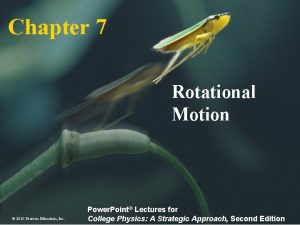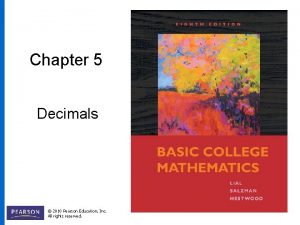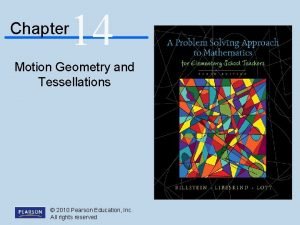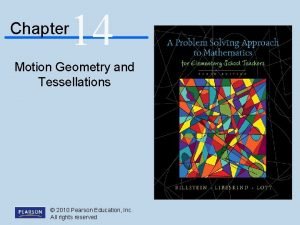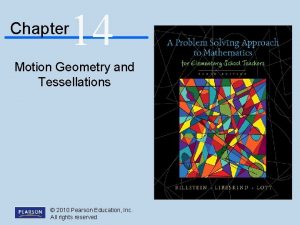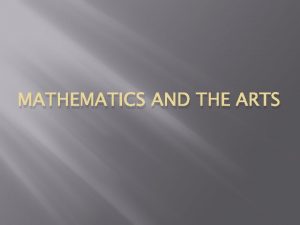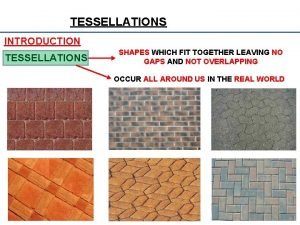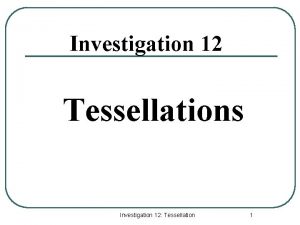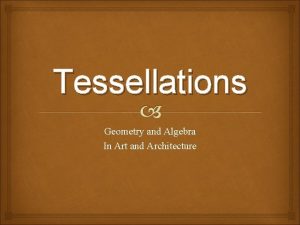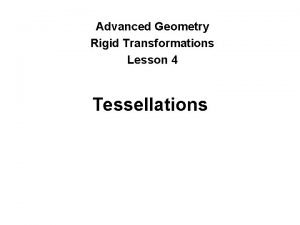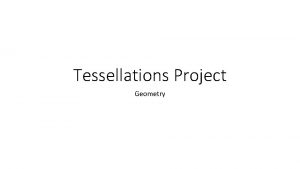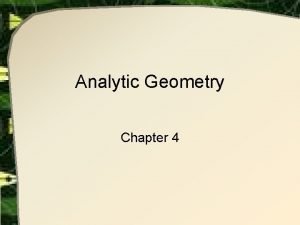Chapter 14 Motion Geometry and Tessellations 2010 Pearson


















- Slides: 18

Chapter 14 Motion Geometry and Tessellations © 2010 Pearson Education, Inc. All rights reserved

NCTM Standard: Motion Geometry Young children come to school with intuitions about how shapes can be moved. Students can explore motions such as slides, flips, and turns by using mirrors, paper folding, and tracing. Later, their knowledge about transformations should become more formal and systematic. In grades 3– 5 students can investigate the effects of transformations and begin to describe them in mathematical terms. Using dynamic geometry software, they can begin to learn the attributes needed to define a transformation. Copyright © 2010 Pearson Education, Inc. All rights reserved. 2

NCTM Standard: Motion Geometry In the middle grades, students should learn to understand what it means for a transformation to preserve distance, as translations, rotations, and reflections do. . At all grade levels, appropriate consideration of symmetry provides insights into mathematics and into art and aesthetics (p. 43). Copyright © 2010 Pearson Education, Inc. All rights reserved. 3

14 -4 Symmetries § § § Line Symmetries Rotational (Turn) Symmetries Point Symmetry Classification of Figures by Their Symmetries of Three-Dimensional Figures Copyright © 2010 Pearson Addison-Wesley. All rights reserved. 4

Line Symmetries Mathematically, a geometric figure has a line of symmetry ℓ if it is its own image under a reflection in ℓ. Copyright © 2010 Pearson Education, Inc. All rights reserved. 5

Example 14 -11 Given a figure and a line m. Do the minimum amount of drawing to create a figure from the given figure so that the result has line m as its line of symmetry. Copyright © 2010 Pearson Education, Inc. All rights reserved. 6

Example 14 -12 How many lines of symmetry does each drawing have? 6 1 Copyright © 2010 Pearson Education, Inc. All rights reserved. 2 0 7

Example 14 -13 Given an arc AB, use symmetry and paper folding to find the center and the radius of the circle to which the arc belongs. The arc is part of a circle. The center of the circle is equidistant from the endpoints of any chord of the circle and hence is on the perpendicular bisector of the chord. That perpendicular bisector is a line of symmetry of the circle. Copyright © 2010 Pearson Education, Inc. All rights reserved. 8

Example 14 -13 (continued) To find a line of symmetry, fold the paper containing arc AB so that a portion of the arc is folded onto itself. Then unfold the paper and draw the line of symmetry on the fold mark. Copyright © 2010 Pearson Education, Inc. All rights reserved. 9

Example 14 -13 (continued) Now, refold the paper containing arc AB so that a different portion of the arc is folded onto itself. Then unfold the paper and draw the line of symmetry on the fold mark. Copyright © 2010 Pearson Education, Inc. All rights reserved. 10

Example 14 -13 (continued) The two dotted lines of symmetry intersect at O, the center of the circle of which is an arc. Copyright © 2010 Pearson Education, Inc. All rights reserved. 11

Rotational (Turn) Symmetries A figure has rotational symmetry, or turn symmetry, when the traced figure can be rotated less than 360° about some point, the turn center, so that it matches the original figure. Copyright © 2010 Pearson Education, Inc. All rights reserved. 12

Example 14 -14 Determine the amount of the turn for the rotational symmetries of each figure. a. b. 72°, 144°, 216°, 288° c. 60°, 120°, 180°, 240°, 300° 180° Copyright © 2010 Pearson Education, Inc. All rights reserved. 13

Point Symmetry Any figure that has rotational symmetry 180° is said to have point symmetry about the turn center. Copyright © 2010 Pearson Education, Inc. All rights reserved. 14

Classification of Figures by Their Symmetries Geometric figures in a plane can be classified according to the number of symmetries they have. We can use lines of symmetry and turn symmetries to define various types of quadrilaterals normally used in geometry. Copyright © 2010 Pearson Education, Inc. All rights reserved. 15

Classification of Figures by Their Symmetries Consider a triangle described as having exactly one line of symmetry and no turn symmetries. What could the triangle look like? Copyright © 2010 Pearson Education, Inc. All rights reserved. 16

Symmetries of Three. Dimensional Figures A three-dimensional figure has a plane of symmetry when every point in the figure on one side of the plane has a mirror image on the other side of the plane. Solids can also have point symmetry, line symmetry, and turn symmetry. Copyright © 2010 Pearson Education, Inc. All rights reserved. 17

Symmetries of Three. Dimensional Figures The line n is the axis of rotation. Copyright © 2010 Pearson Education, Inc. All rights reserved. 18
 Types of tessellations
Types of tessellations Example of regular tessellation
Example of regular tessellation Who is the father of tessellation?
Who is the father of tessellation? Escher ghosts
Escher ghosts Polygons in nature
Polygons in nature Pf3 molecular geometry
Pf3 molecular geometry 2010 pearson education inc
2010 pearson education inc Copyright 2010 pearson education inc
Copyright 2010 pearson education inc 2010 pearson education inc answers
2010 pearson education inc answers 2010 pearson education inc answers
2010 pearson education inc answers 2010 pearson education inc answers
2010 pearson education inc answers 2010 pearson education inc answers
2010 pearson education inc answers 2010 pearson education inc
2010 pearson education inc 2010 pearson education inc
2010 pearson education inc Copyright 2010 pearson education inc
Copyright 2010 pearson education inc 2010 pearson education inc
2010 pearson education inc Copyright 2010 pearson education inc
Copyright 2010 pearson education inc 2010 pearson education inc answers
2010 pearson education inc answers Decimal in words example
Decimal in words example
